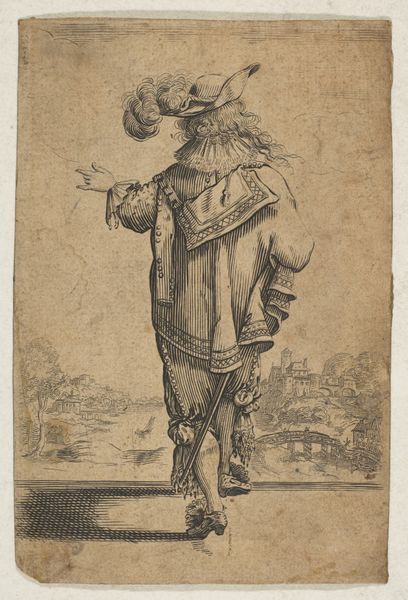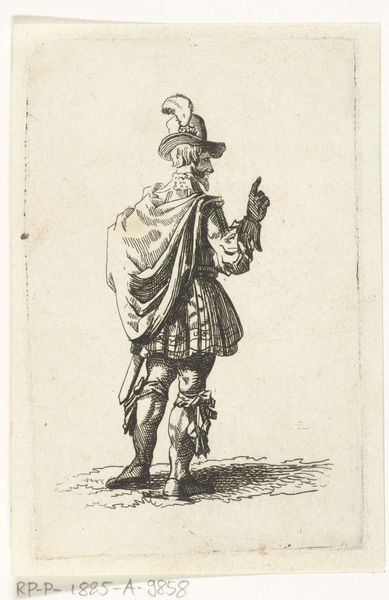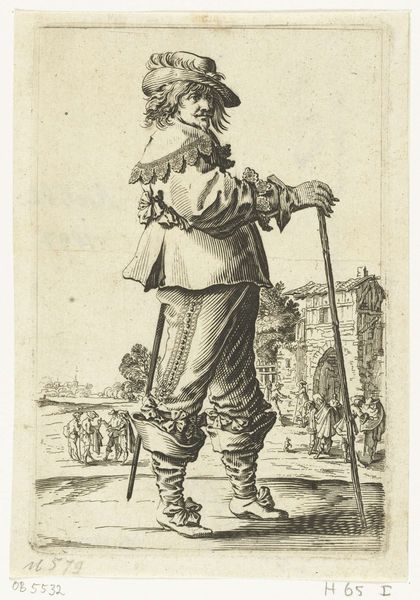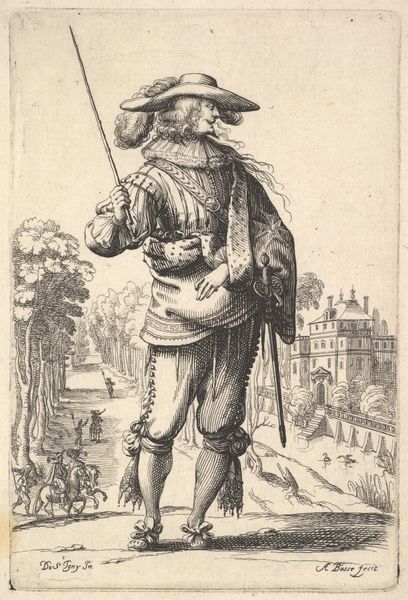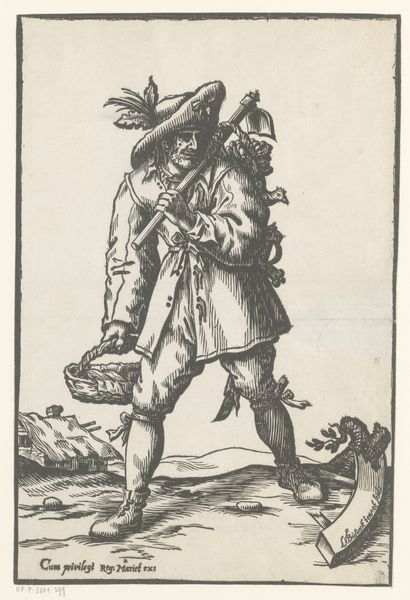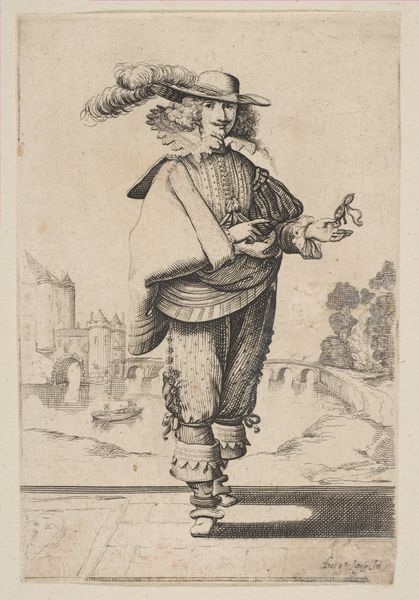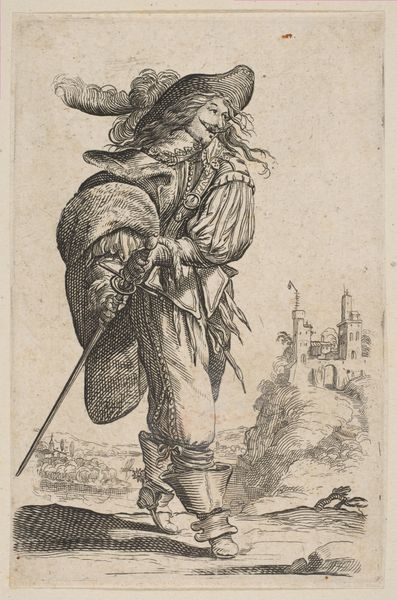
A gentleman walking forward, his face in profile to the left, holding his glove in his right hand and wearing a hat, a fur jacket, and shoes with ribbons, from "The Garden of the French Nobles In Which One Can Pick Up Their Way of Dressing" 1629
0:00
0:00
drawing, print, engraving
#
portrait
#
drawing
#
baroque
# print
#
figuration
#
men
#
genre-painting
#
engraving
#
profile
Dimensions: Sheet: 5 11/16 × 4 1/16 in. (14.5 × 10.3 cm) Plate: 5 1/2 × 3 3/4 in. (14 × 9.5 cm)
Copyright: Public Domain
This etching by Abraham Bosse captures a French nobleman, and was made using the intaglio printmaking process. Here, the artist would have used a sharp tool to incise lines into a metal plate, which was then inked, and pressed onto paper to transfer the image. Look closely, and you'll notice the intricate detailing in the nobleman's attire. From the fur jacket to the ribbons on his shoes, each element is meticulously rendered through a dense network of fine lines. These aren't just artistic choices; they reflect the social values of the time. Fashion was a marker of status, and the precise rendering of clothing was a form of visual merchandising. Bosse made many prints that documented fashionable dress, and his commercial acumen is obvious. These prints served as a way for the rising middle class to consume imagery of the nobility, fueling desires and aspirations that also drove the fashion industry. The skilled labor required to create both the clothing and the print speaks volumes about the economic forces at play in 17th-century France. So, next time you see a print, consider the complex dance between art, fashion, and society.
Comments
No comments
Be the first to comment and join the conversation on the ultimate creative platform.



